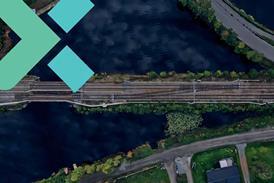
GERMANY: Another step towards automation of main line rail operations was taken on September 23 when Alstom demonstrated a remotely-controlled diesel multiple-unit near Salzgitter.
Developed under the Autonomous Regional Train Evolution project, the train ‘was able to travel a few kilometres in autonomous mode, meaning without the intervention of a driver’, Alstom said.
The train consisted of a Class VT648 diesel trainset, one of two units made available for the trials by Landesnahverkehrsgesellschaft Niedersachsen. It had been fitted with cameras to monitor the track ahead, together with an image recognition system that ‘processes the existing railway signals’. Using a tablet computer linked to the train control system, ARTE works with the train’s on-board ETCS equipment to provide GoA4 unattended operation. The tablet can be located away from the train in a remote location such as a depot or dedicated driving facility.
Remote Train Operation, Alstom said, can serve ‘as a fallback solution to regain manual control of a train without a driver on board’. Operators would always be able to see the live transmission from the camera at the front of the train and would be able to brake or accelerate the train remotely, it continued. The objective of the trials was to ‘show how accompanied, automated train operation can be implemented in today’s rail network by retrofitting the vehicles’, the company stated.
Florian Kittelmann, Autonomous Mobility Director at Alstom, explained that the company had deliberately ‘taken a train which already has a couple of years under its belt’, which ‘allows us to demonstrate our ability to basically upgrade any train in the world from manual to automated operation’.
Commenting on the potential of the project, he suggested that automation could help deal with a shortage of train drivers ― currently a significant issue in Germany ― as well as reduce the energy footprint. ‘This is the first time in the world that autonomous technology is being applied to trains already in service, proving that automation can be seamlessly integrated into existing fleets’, he concluded.
Apart from Alstom, other members of the ARTE research project are the aerospace centre DLR and the Rail Operations & Infrastructure Department at the Technical University of Berlin. Funding was provided by the Federal Ministry for Economic Affairs & Climate Action, and the Ministry of Economics, Transport, Building & Digitalisation in the Land of Niedersachsen.
TU Berlin’s role includes analysis of the research project ‘to define new roles and tasks for the operating personnel as well as opportunities for their qualification’. It also aims to ensure that safety requirements are met and will seek to attain approval from the relevant assessment bodies.
An automated train was first demonstrated on main line tracks in the Salzgitter area in 1996 when a Deutsche Bahn Class 364 diesel shunter was used to experiment with driverless operation of a freight shuttle between Volkswagen’s car engine factory in Salzgitter-Beddingen and the main assembly plant in Wolfsburg. Operations were automated over the 13 km section from Salzgitter to Braunschweig with the aim of proving that driverless operation was ‘at least as safe as existing systems’. During the tests the Federal Ministry of Transport had insisted on a member of staff being present in the locomotive cab to watch for obstacles on the track.

















